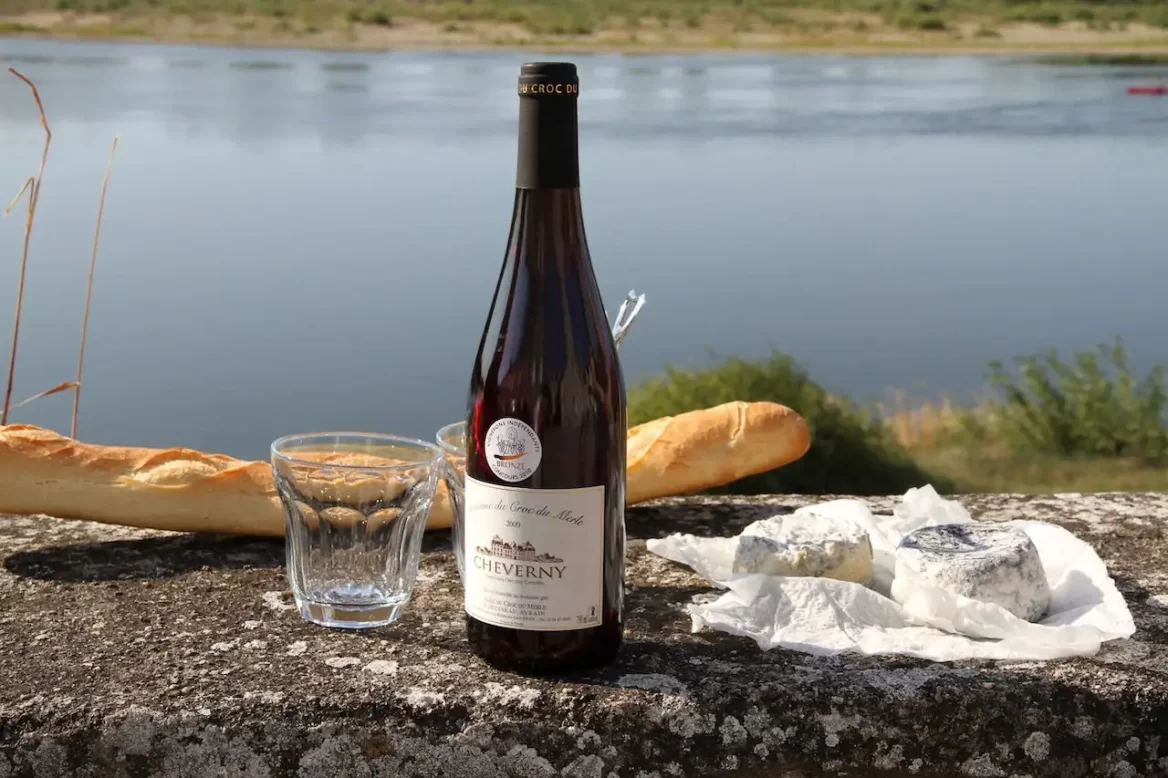
Wine and cheese have been enjoyed together for centuries, and for good reason. The complex flavors and textures of cheese pair perfectly with the nuances of wine, resulting in a culinary experience that is both sophisticated and approachable. However, pairing wine and cheese can be intimidating for beginners, who may feel overwhelmed by the sheer variety of cheeses and wines available. In this article, we will provide a beginner-friendly guide to pairing wine with cheese, so you can enjoy this delicious combination with confidence.
Before we dive into the specifics of pairing different types of cheese with different wines, it's important to understand some fundamental principles of pairing. The first principle is that wine and cheese should complement each other, meaning that the flavors and textures of the cheese should enhance the wine, and vice versa. This can be achieved through either matching or contrasting flavors. For example, a wine with a high acidity can be paired with a creamy cheese, as the acidity will help cut through the richness of the cheese.
Another important principle to keep in mind is balance. A successful wine and cheese pairing should be balanced, meaning that neither the wine nor the cheese should overpower the other. A good rule of thumb is to pair wines and cheeses of similar intensity. For example, a strong, bold red wine like Cabernet Sauvignon would pair well with an aged cheddar, as both have strong, complex flavors that can stand up to each other.
Finally, it's important to consider the texture of the cheese when choosing a wine to pair with it. Soft, creamy cheeses like brie or camembert pair well with lighter-bodied, fruitier wines like Pinot Noir or Chardonnay. Hard, aged cheeses like Parmesan or Manchego, on the other hand, pair well with full-bodied, robust wines like Cabernet Sauvignon or Syrah.
Now that we've covered some basic principles of pairing, let's take a closer look at some common types of cheese and the wines that pair well with them.
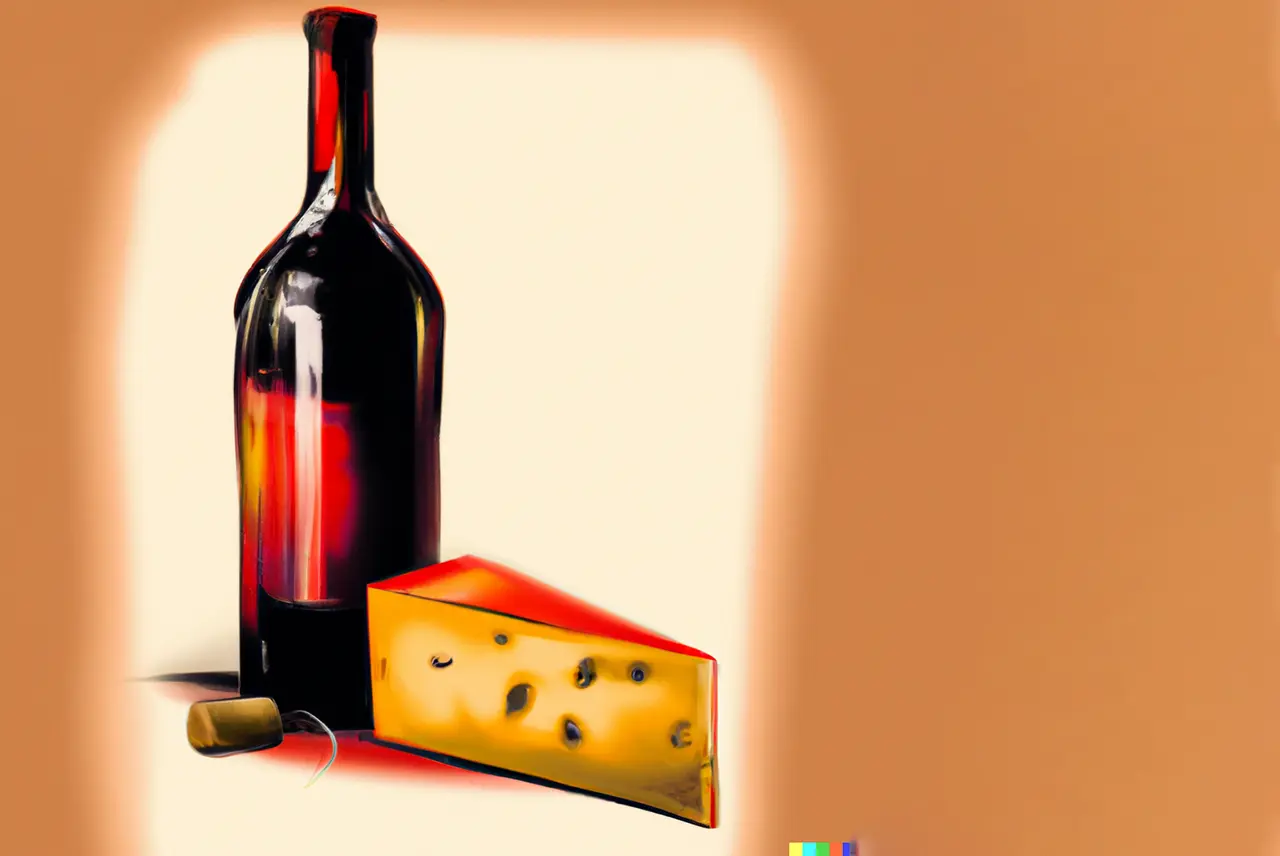
Cheddar is a popular cheese that ranges in flavor from mild to sharp. A mild cheddar can be paired with a crisp white wine like Sauvignon Blanc, while a sharp/aged cheddar pairs well with a full-bodied red wine like Cabernet Sauvignon.
Cabernet Sauvignon and aged cheddar make a good pairing because they have complementary flavors and textures that enhance each other. Cabernet Sauvignon is a full-bodied, complex wine with bold fruit flavors and high tannins, while aged cheddar is a hard cheese with a sharp, nutty flavor and a crumbly texture.
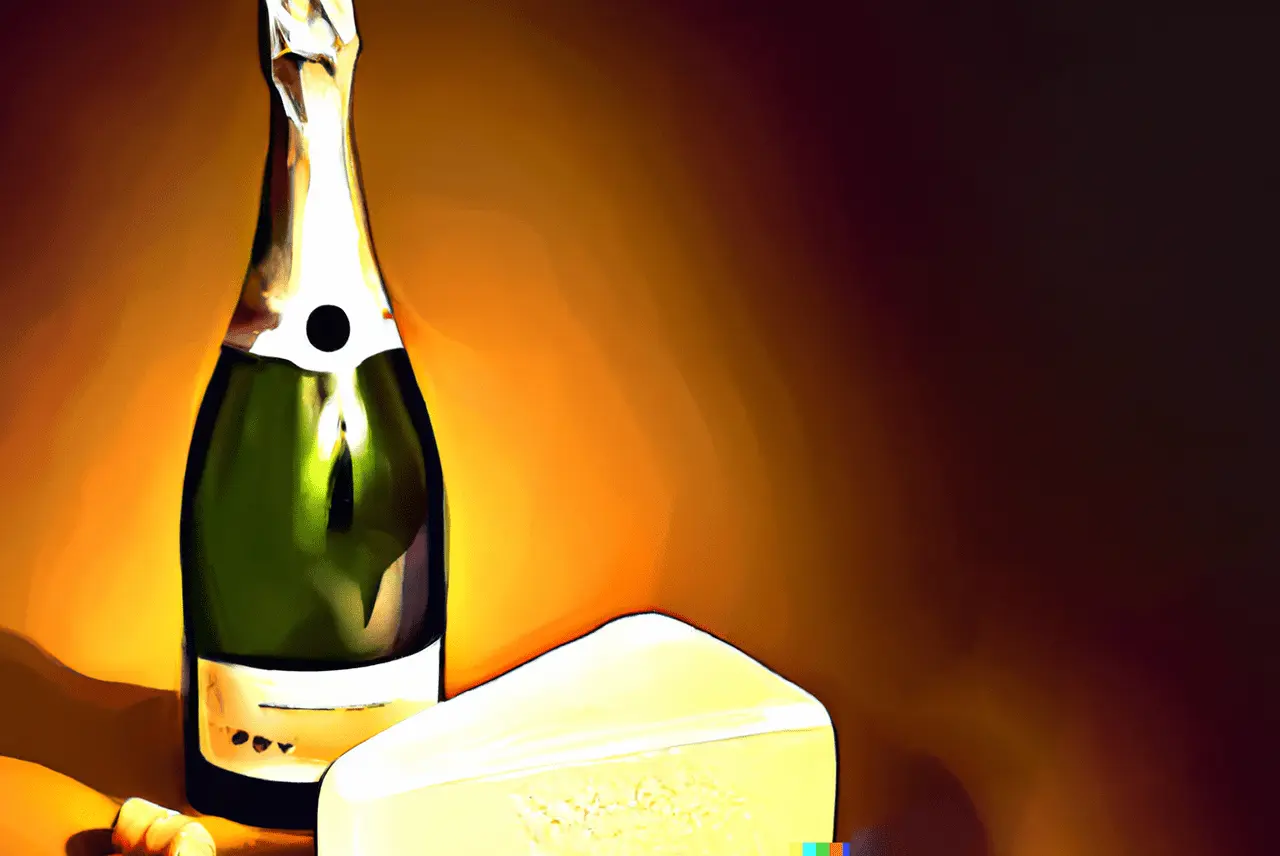
Brie is a soft, creamy cheese with a mild, buttery flavor. It pairs well with a light-bodied, fruit-forward red wine like Pinot Noir, or a crisp, acidic white wine like Chardonnay, or Champagne.
Champagne and brie make a great pairing because they have complementary flavors and textures. Champagne is a sparkling wine with high acidity and light, effervescent bubbles, while brie is a soft, creamy cheese with a buttery flavor and a slightly tangy finish.
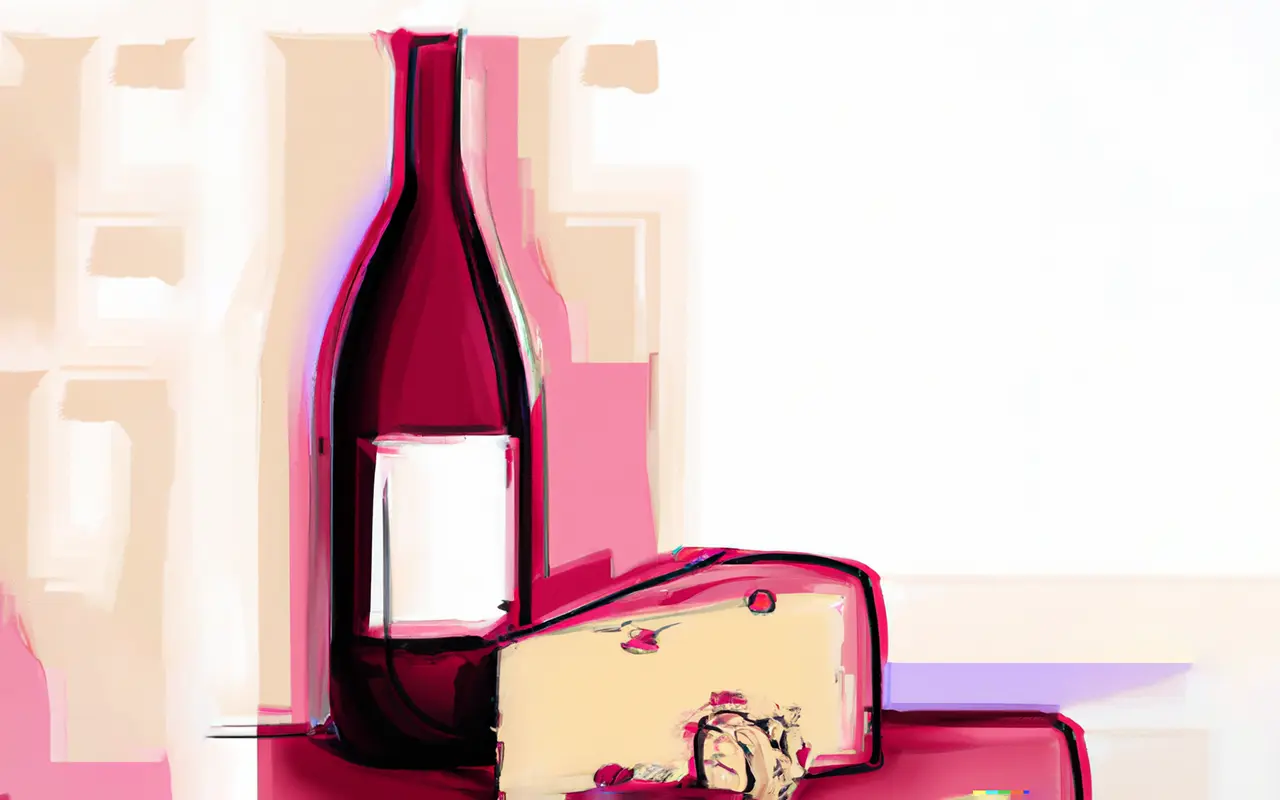
Gouda is a semi-hard cheese with a nutty, caramel flavor. It pairs well with a medium-bodied red wine like Merlot or a lighter, fruity red wine like Côtes du Rhône.
Try also: Syrah and Gouda, Pinot Grigio and Gouda, or Riesling and Gouda.
The nutty and sweet flavors of Gouda pair well with the fruitiness of Cotes du Rhone red wine, while the tannins in the wine help to cut through the richness of the cheese. The medium body of the wine also allows it to stand up to the semi-hard texture of Gouda, creating a balanced and satisfying flavor profile
Yes. A dark beer like a stout or a porter also makes a great pairing for Gouda. The roasted malt flavor of the beer pairs well with the nuttiness of the cheese, while the carbonation helps to cut through the richness.
Blue cheese is a pungent, strong-flavored cheese that pairs well with sweet dessert wines like Port or Sauternes. It can also be paired with a bold, spicy red wine like Zinfandel or Syrah.
Because they have complementary flavors that create a perfect balance. Blue cheese has a strong, pungent, and salty taste, while Port wine is sweet, rich, and fortified. The sweetness of the Port wine complements the strong and salty flavors of blue cheese, creating a harmonious and satisfying flavor profile.
Additionally, the high alcohol content and richness of the Port wine help to cut through the richness and creaminess of the blue cheese, providing a balance to the overall flavor. The sweetness of the Port wine also helps to balance the sharpness of the blue cheese, creating a pleasant contrast.
Goat cheese, also known as chevre, has a tangy, slightly sweet and salty flavor and a creamy, crumbly texture. The tangy and slightly sweet flavors of goat cheese are an excellent match for Sauvignon Blanc's crisp and acidic profile, making it a popular pairing choice.
Sauvignon Blanc is a popular wine pairing for goat cheese due to its crisp and acidic flavor profile. The high acidity of the wine helps to balance the tangy and slightly sweet flavors of the cheese, creating a harmonious combination.
The flavors of Sauvignon Blanc often have notes of citrus, herbs, and grass, which complement the subtle earthiness and grassy notes of goat cheese. Additionally, Sauvignon Blanc is a light-bodied wine with a refreshing finish, which makes it an excellent choice for pairing with the rich and creamy texture of goat cheese.
Furthermore, Sauvignon Blanc is not too overpowering, so it allows the flavors of the cheese to shine through. This makes it an ideal pairing for younger, milder goat cheeses, as it doesn't overwhelm the delicate flavors of the cheese.
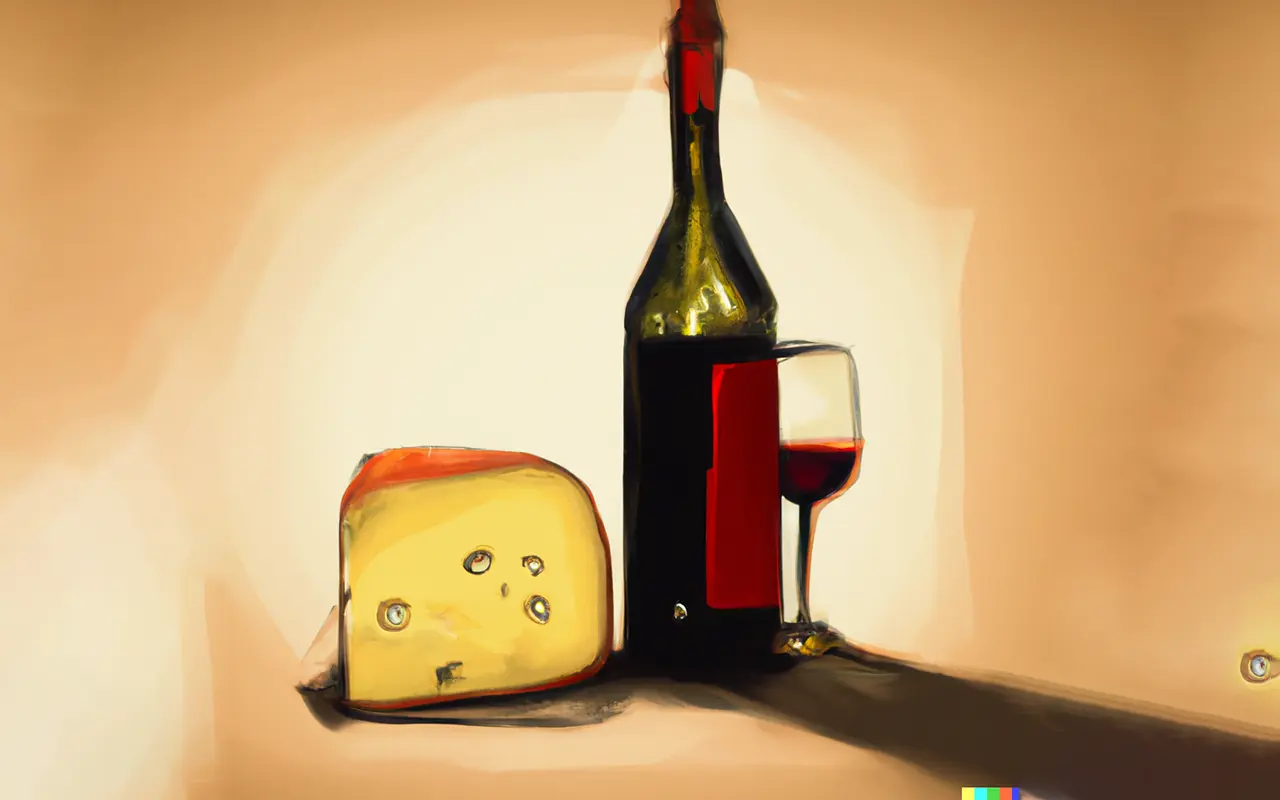
Pecorino Toscano is a hard, nutty cheese made from sheep's milk in the Tuscany region of Italy. Pecorino Toscano has a sweet and nutty flavor with a slightly tangy finish, and its texture is crumbly and firm. The cheese pairs well with medium-bodied red wines, such as Chianti Classico or Sangiovese, which complement its nutty flavor and balance its tangy finish. It is a versatile cheese that adds depth and flavor to many different dishes.
Pecorino Toscano has a nutty and sweet flavor with a slightly tangy finish that complements the fruit and spice notes of Chianti Classico. This Italian sheep's milk cheese is typically aged for several months, which intensifies its flavor and makes it a perfect pairing for the bold flavors of Chianti Classico.
Here are some cheese options that are particularly delicious with Chianti Classico:
In addition to these classic pairings, there are plenty of alternative pairings to explore. For example, a rich, creamy goat cheese can be paired with a crisp, acidic Sauvignon Blanc for a refreshing combination. A hard, nutty cheese like Parmesan can be paired with a dry, crisp white wine like Pinot Grigio to enhance its savory flavor.
While understanding the basics of pairing and the different types of cheese and wine can certainly help you create successful pairings, there are also some practical tips to keep in mind when putting together a wine and cheese board.
First and foremost, it's important to serve cheese and wine at the correct temperature.
Most cheeses should be served at room temperature, as this brings out their full flavor and aroma. To achieve this, remove the cheese from the refrigerator at least an hour before serving. Similarly, wine should be served at the appropriate temperature. White wine should be chilled, but not too cold, while red wine should be served slightly below room temperature.
Presentation also plays an important role in enhancing the overall experience of pairing wine and cheese. When putting together a cheese board, aim for a variety of flavors and textures. Include a mix of soft and hard cheeses, as well as cheeses with different flavor profiles. It's also a good idea to include some accompaniments, such as crackers, bread, fruit, and nuts, to add some additional texture and flavor to the board.
Finally, don't be afraid to experiment with unconventional pairings. While there are certainly classic pairings that work well, part of the fun of pairing wine and cheese is discovering new combinations. If you find a pairing that works well, make note of it and try it again in the future. And if a pairing doesn't work out, don't be discouraged – part of the fun is in the experimentation.
Pairing wine with cheese can seem intimidating at first, but with some basic knowledge and a willingness to experiment, anyone can create successful pairings. Keep in mind the principles of matching and contrasting flavors, balancing intensity, and considering texture when choosing a wine to pair with a cheese. Don't be afraid to try alternative pairings or experiment with your own combinations. With some practice, you'll be able to create wine and cheese pairings that are both delicious and satisfying.
